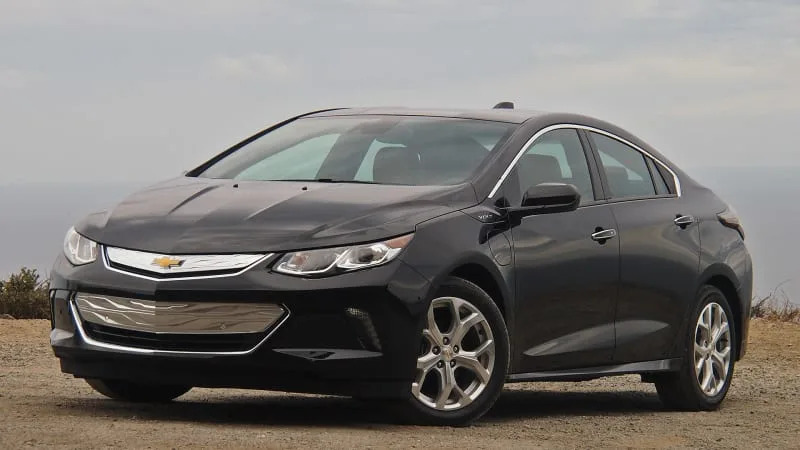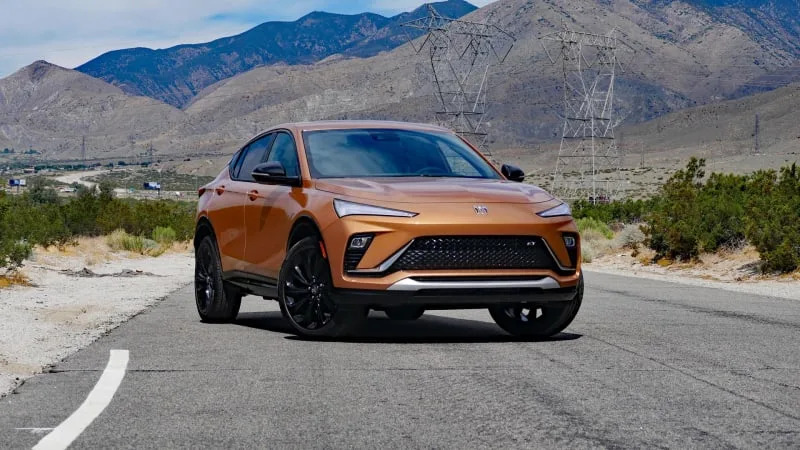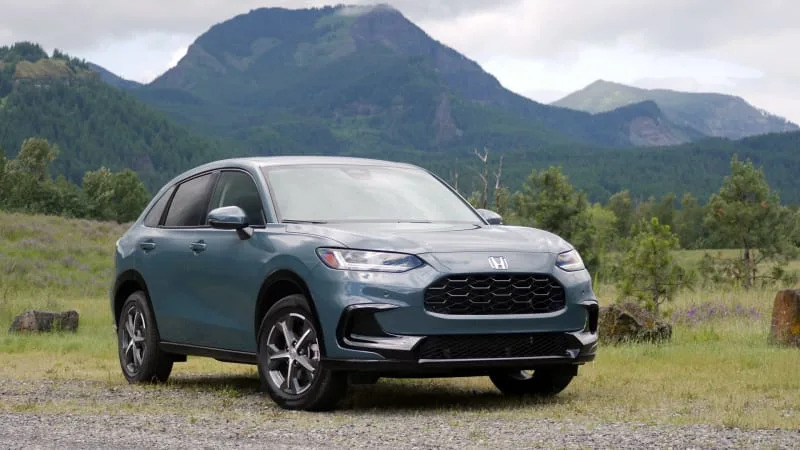Dear America, you don't need as much power as you think

I recently won a 0-20-mph drag race against a Chevrolet Volt. A day later I smoked a Tesla Model 3. “Um OK,” you’re thinking, “that can’t be that hard.” Well, except that the vehicle I was piloting featured a hybrid powertrain of a Bosch electric motor and 40-year-old human legs. That’s right, I out accelerated automobiles on a bicycle.
On another occasion, I found myself driving behind my wife in her 2023 Kia Niro EV. The specs say it accelerates from zero to 60 mph in 7.8 seconds, a time that’s six-tenths off the pace of Kia’s rear-motor-only EV6, a vehicle I’ve repeatedly read being described as “slow.” The Niro, therefore, must be extra-slow. And yet, as she turned left onto a highway onramp, she rocketed forward leaving me in a Mercedes-AMG C43 and every other car in the left turn lane in the distance.
I share these anecdotes not to boast about my cycling ability, nor my wife having a lead foot. No no. I’m crap and she really doesn’t. Instead, I want to point out that most drivers accelerate very slowly. The notion of “bigger is better” will forever be engrained in the American psyche, but when it comes to horsepower largesse, today’s cars hilariously exceed both the expectations and driving habits of most drivers. Most car buyers just don’t have a frame of reference when it comes to equating 0-60 times, output figures and the actual feeling of acceleration.

Eat my dust, Mr Volt!
Now, we in the automotive-reviewing media absolutely share some of this blame. We like accelerating quickly and cars that accelerate quicker are bound to reap more positive reviews. At the very least, we’re obligated to point out when a car’s acceleration is slower than a certain competitor’s or the segment’s average.
However, just because Car A is slower than Car B doesn’t make Car A slow. It makes it slower. For example, the dual-motor EV6 may be 2 full seconds quicker from 0-60 than the rear-motor model – a relatively massive difference – but barring a back-to-back drive or a wealth of comparative knowledge, it’s laughable to think that the average driver could possibly deem the rear-motor version “slow.” Because it isn’t.
The near-universal use of turbocharging, the popularity of all-wheel-drive and increased proliferation of electric motors has resulted in this rapid drop in 0-60 times that’s outpacing customer expectations and driving habits. Zero-to-60 times starting with the numbers 4, 3 and, my goodness, 2 were not too long ago the realm of high-end performance cars and exotics. The idea of something accelerating in less than 2 seconds was just absurd. Now, people think something is slow if that 0-60 time doesn’t start with such numbers. That’s just nonsense.
Ultimately, I’m probably just saying here that “0-60 times are a bit dumb,” or at least they don’t fully express the feeling of acceleration. Because of turbocharging and electric motors, near-instantaneous torque has become so commonplace that cars can easily feel much quicker than their 0-60 times and engine output would imply because of how eagerly they jump off the line or punch their way into an open spot in moving traffic. It’s about power delivery, not power amount.


Similar 0-60 times, but only the teal one feels slow.
The perfect example of this is the surprisingly excellent Buick Envista currently in my driveway. It has a 1.2-liter turbocharged inline-three cylinder, which sounds like something they’d flock to in France, not the good ‘ol U.S. of A. The output of 137 horsepower and 162 pound-feet of torque doesn’t sound any more indicative of America, nor does the 9.4-second 0-60 time that Motor Trend measured. You know what, though? It does not feel slow.
Now, rivals with similar 0-60 times like the Honda HR-V and Subaru Crosstrek absolutely do, but that’s because they have naturally aspirated engines. Again, it comes down to power delivery. The Envista’s little turbo triple produces its max torque at a low 2,500 rpm, and as a result, it feels energetic when accelerating around town. Its traditional six-speed automatic doesn’t hunt for gears like a nine-speed would, doesn’t stutter into action like a DCT or generally suck like a CVT. Ample sound deadening helps too, as it only lets into the cabin a nice, muffle snarl of the little triple when accelerating hard. All told, this technically “slow” powertrain is enough to easily get me up to speed quicker than the cars (and bikes) around me. Sure, accelerating onto the highway from a stop will indeed reveal the Envista running out of steam if you absolutely need to gun it, but that’s pretty much the only scenario in which its 0-60 time is indicative. Even then, I still routinely managed to leave behind all those other cars waiting at the double-left onto the same onramp. Now, had my wife been there next to me in her Niro, that’s a different story.
At the same time, that rinky-dink engine that achieves more realistic acceleration helps keep the Envista’s price below $30,000 despite equipment, quality and design that suggest something higher. Fuel economy also benefits. I was getting better than its estimated 32 mpg highway on my round-trip drive between Agoura Hills and Palm Springs, Calif. That’s among the best in the subcompact segment along with the HR-V and Crosstrek.
In the EV realm, less powerful single-motor models can go further on a charge or even utilize smaller battery packs and therefore resources. And again, even the slowest EVs don’t feel slow unless you put them up against the Plaids and Taycans of the world.
To be clear, if you want a Plaid or a Hellcat or all the damn power money can buy, that’s great! No qualms there, let’er rip. I know I want all the damn power my money can buy. My point is people shouldn’t dismiss single-motor EVs or small-engined cars like the Envista just because their outputs and acceleration times seem underwhelming relative everything else in the automotive realm. Take a test drive. I bet their acceleration habits will be perfectly in line with what’s on offer (even if it’s an HR-V or Crosstrek, which people still buy in droves). I also hope that more car companies offer choices like the Envista so that people don’t have to pay more for performance they definitely don’t need.







